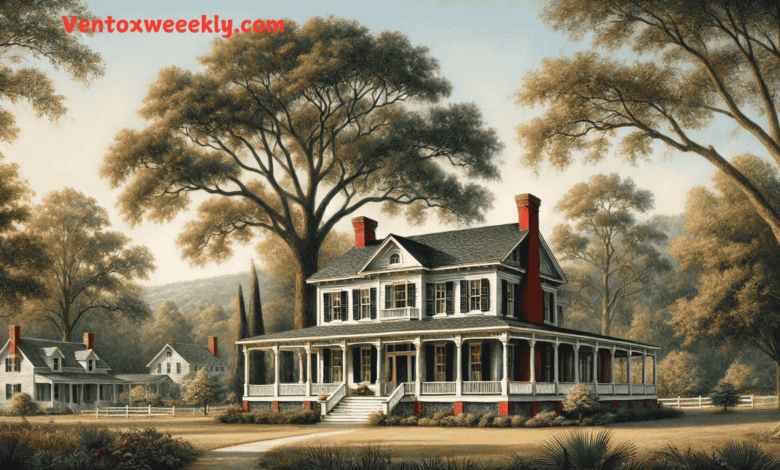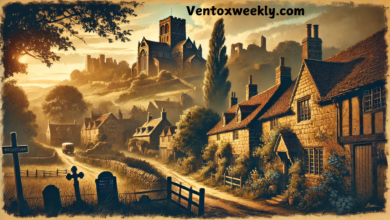A Historical Exploration Through 9236 Kitchin Wake Forest from John the Diary Rollesville

Wake Forest, a charming town in North Carolina is known for its rich history and tight-knit community. Among the many stories that shaped its identity is the tale of “9236 Kitchin”, as documented in John The Diary of Rolesville. This historical narrative offers a window into the life and growth of Wake Forest and its neighbouring town, Rolesville, during the late 19th and early 20th centuries. In this article, we delve into the significance of 9236 Kitchin, the role of John’s diary, and the preservation efforts that keep this legacy alive.
The Origins of 9236 Kitchin Wake Forest
9236 Kitchin was more than just a property; it was a social and economic hub within the Wake Forest community. Located in the heart of the town, this house served as a gathering point where residents frequently met to exchange ideas, share resources, and support one another. Its prominence is captured in the writings of John, a resident of nearby Rolesville, whose diary entries provide a vivid account of the life and events tied to this location.
John’s diary suggests that 9236 Kitchin was owned by a family closely connected to him, possibly through friendship or business ties. His entries describe the house as where he found solace and camaraderie, reflecting the close-knit nature of rural North Carolina communities at the time. Whether visiting for a meal, participating in local gatherings, or assisting with repairs, John’s frequent mentions of 9236 Kitchin emphasize its importance in his life and the broader community.
John’s Diary: A Glimpse into the Past
John’s diary serves as a crucial historical document, offering insights into the daily life, struggles, and triumphs of Wake Forest and Rolesville residents during a time of significant change. John’s detailed observations give historians a first-hand account of the area’s social and economic dynamics.
In his entries, John often referred to his travels between Rolesville and Wake Forest, highlighting the interconnected nature of these communities. Despite their distinct identities—Wake Forest being more developed and Rolesville retaining a rural charm—the towns shared a bond through agriculture, commerce, and shared values. 9236 Kitchin, located in Wake Forest, acted as a bridge between these two communities, symbolizing the unity and resilience that defined the region.
One poignant entry dated July 1902 reads: “Visited the Kitchin house again this morning. The trees sway like old friends, whispering memories of our days in quiet solace. The family was warm as always, and I felt at peace there.” This poetic reflection shows John’s deep attachment to the property, underscoring the emotional and social significance of 9236 Kitchin.
The Social and Economic Role of 9236 Kitchin
The role of 9236 Kitchin extended beyond John’s personal experiences; it was also a focal point for the broader community. In rural North Carolina, houses like 9236 Kitchin often served as informal town centres where neighbours gathered for events, shared meals, and supported each other in need. It was a place of celebration and solidarity, as residents came together to address communal challenges such as crop failures, economic hardships, or the need for infrastructure development.
Moreover, the property was central to local economic activities. John’s diary entries describe interactions with farmers, traders, and artisans, highlighting how 9236 Kitchin facilitated commerce and collaboration between Wake Forest and Rolesville. This synergy was essential, as the two towns depended on each other’s resources and labour force, ensuring mutual growth and prosperity.
Architectural Significance of 9236 Kitchin
Architecturally, 9236 Kitchin blended traditional Southern design and practical functionality. It featured spacious porches, large windows, and a well-proportioned structure typical of Southern homes of that era. These elements provided aesthetic appeal and suited the community’s social and climatic needs, offering spaces for gatherings and cool relief during hot summer months.
Though the house has changed over the years, its historical charm remains a point of interest. Local historical societies are trying to preserve its legacy by potentially restoring or maintaining its original features, emphasizing its importance as a historical landmark in Wake Forest.
Preservation Efforts and Community Engagement
Recognizing the importance of 9236 Kitchin and John’s diary, the community of Wake Forest has rallied to preserve this significant piece of their history. Local historical societies have been instrumental in raising awareness and funds for its conservation. These groups aim to maintain the property and its legacy through educational programs, guided tours, and historical reenactments that bring John’s diary to life.
One of the primary efforts has been digitizing John’s diary. By making the diary accessible online, historians and enthusiasts can explore the history of Wake Forest and Rolesville from a first-person perspective. This initiative preserves the diary’s content and makes it a valuable educational resource for future generations.
The Modern-Day Legacy of 9236 Kitchin
Today, while the physical structure of 9236 Kitchin may no longer serve as the bustling hub it once was, its legacy persists. John’s diary ensures that the stories and experiences associated with the property are not lost to time. Residents and visitors alike cherish this piece of history, with many visiting the location to reflect on its past and learn about the area’s evolution.
Efforts are ongoing to establish 9236 Kitchin as an official historical landmark, securing its place in Wake Forest’s collective memory. By commemorating John’s contributions and the role of 9236 Kitchin, the community aims to honour the values of unity, resilience, and collaboration that have defined the region for generations.
Conclusion: The Enduring Significance of 9236 Kitchin Wake Forest
The story of 9236 Kitchin, as documented in John the Diary of Rolesville, is more than just a tale of one property; it is a narrative that intertwines the history of two towns and reflects the spirit of their people. Through preservation efforts and community engagement, the legacy of this historic location will continue to educate and inspire.
FAQs: 9236 Kitchin Wake Forest from John the Diary Rollesville
What is the significance of 9236 Kitchin in Wake Forest?
9236 Kitchin is historically significant due to its role as a central hub for the local community in Wake Forest. John frequently mentioned it as a place of social and economic gatherings. The house symbolized unity and resilience, providing a meeting point for neighbours and playing an essential role in the shared history of Wake Forest and Rolesville.
Who was John the Diary, and why is his diary important?
John was a resident of Rolesville who maintained detailed accounts of his life and the community’s events from the late nineteenth and early twentieth centuries. His diary offers insights into daily life, agricultural practices, and the social and economic changes in the area, making it a valuable historical resource for understanding the development of Wake Forest and its surroundings.
Is 9236 Kitchin Wake Forest still standing today?
While the physical structure may not be preserved in its original form, the community continues to honour 9236 Kitchin’s legacy. Local historical societies have been working on preservation efforts, including raising awareness about its significance and possibly digitizing John’s diary to keep its history alive.
How is the community preserving the legacy of 9236 Kitchin?
Preservation efforts include community-led initiatives such as fundraising, educational programs, guided tours, and historical reenactments. Local historical societies are also digitizing John’s diary to make it accessible online, ensuring that future generations can learn about the property’s historical importance.
Can the public visit 9236 Kitchin Wake Forest?
9236 Kitchin is not an official public historical site as of now. However, local groups occasionally organize tours and events to share its history and importance. Those interested can contact local historical societies for information about upcoming events and ways to engage with the property’s history.




